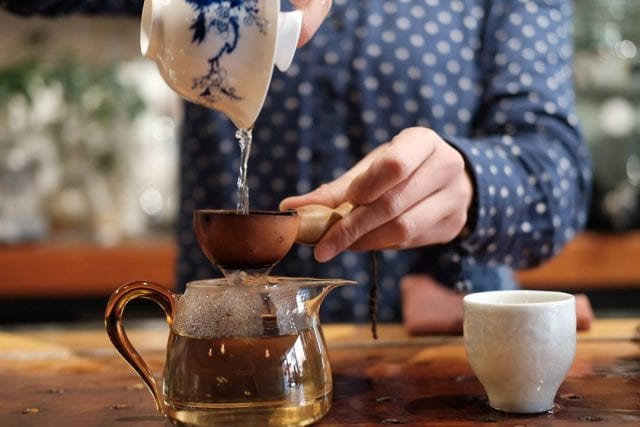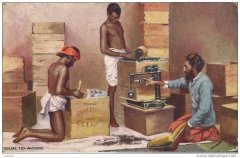What is Natural Black Tea? the Story and Development path of Tea Origin and simple Formula sharing of mixed Tea
For all tea lovers in the world, the word "tea" is one of the most beautiful words. Its magic is to make you crave it. Of course, this is why tea is considered to be one of the most popular drinks in the world. As we all know, tea is the most popular drink in the world after water. Whether black tea or green tea, with or without milk, hot or cold, pure or mixed, people like to drink in their own way. Each kind of tea is a unique experience. No matter what kind of tea, the source of tea is the same. Tea tree (Camellia Sinensis) is a plant that can produce tea and buds. The origin of tea this plant grows in tropical and subtropical climates and belongs to the category of flowering evergreen shrubs. Tea trees produce small white flowers, leaves and buds, which can be harvested after three years of planting shrubs. This plant can survive for more than a hundred years. An interesting fact about the tea tree is that if it is not disturbed, it will grow into a tree. Therefore, the cultivated plants are pruned to a lower height to facilitate picking. Leaves and shrubs are harvested from smaller and younger bushes. After harvest, the leaves are dried and rolled up for distribution. China, Japan, India and Sri Lanka are the four major traditional tea producers in the world. But recently, many new tea-producing countries have emerged, such as Bangladesh, Vietnam and Kenya. Due to the differences in altitude, soil type, plant type, plant age, climate and so on, the producing area is one of the main criteria to determine the characteristic flavor of tea. Each producing area can produce any of the five main kinds of tea. For example, green tea from Japan, white tea from China, black tea from Sri Lanka. No matter which kind of tea you choose, it is important to understand its origin and production process to confirm its quality and standards. If we look at the history of tea, it originated in southwest China as a medicinal beverage. Later, in the Tang Dynasty in China, tea became popular as a leisure drink, and gradually, tea was also famous in other East Asian countries. In the 16th century, Portuguese priests and merchants introduced it to Europe. By the late 17th century, drinking tea became a fashion for the British. The British wanted to produce tea on a large scale and decided to commercialize it in India to circumvent China's monopoly. Tea culture was introduced to India by the British in 1836 and to Sri Lanka in 1867.

100% natural tea (unmixed) vs. The most interesting thing about mixed tea is that each kind of tea is different, and every detail of the planting and production process affects its final taste in your cup. The origin and topography have a profound impact on its flavor and character. Before we introduce natural tea (unmixed tea) and mixed tea in detail, let's take a brief look at what they are. Pure tea or natural tea refers to pure tea with the same quality classification from a single producing area and is not mixed with any other tea. Mixed tea, as its name implies, is made by mixing different kinds of tea together. These two kinds of tea have their remarkable characteristics, advantages and disadvantages. Let's discuss these two kinds of important teas in detail.
Important Notice :
前街咖啡 FrontStreet Coffee has moved to new addredd:
FrontStreet Coffee Address: 315,Donghua East Road,GuangZhou
Tel:020 38364473
- Prev

Where does Wuwa black tea come from? What is the difference in taste between Wuwa black tea and Ceylon black tea?
How is Ceylon tea grown? The method of growing tea at equal height is used in Sri Lanka. In contour planting, tea trees are planted along the contours of the land, usually on slopes. More than 1 million people in Sri Lanka are engaged in tea cultivation because the planting process requires too much labour. This process needs to be ripe.
- Next

A detailed explanation of the difference between mixed black tea, single manor black tea and single variety black tea
Unmixed teas grown in different parts of the same country or in different countries of the world can produce a variety of national teas. This is why we should understand why unmixed or single-origin teas are available. Single origin or we can say that pure tea is the characteristic of a particular region, as pure tea.
Related
- A complete list of coffee bean names and their meanings! What is Yejia Shefi coffee? Where is Mantelin coffee?
- What grade does Arida Manor Kaduai coffee beans belong to? What treatment is Arida ASD slow anaerobic sun exposure?
- The milk tea cup becomes smaller?! Overlord Tea Girl launches a new "Return to Yunnan" series
- Accused of selling counterfeit and high-priced coffee beans! Well-known boutique coffee brand "Oukelao" bowed and apologized!
- How to make espresso dumplings? Can I eat coffee and glutinous rice balls together?
- Save the unformed and stagnant powder cakes in one second! What is the problem with stagnant water in the powder bowl of the espresso machine?
- What does hand-brewed coffee stop mean? Why is it not recommended to make coffee by hand?
- Is it normal to smell like coffee? Why does coffee smell like alcohol? What's wrong with the strong smell of cold extract ice dripping ice brewed coffee?
- How to solve the problem that hand-brewed coffee extraction takes too long? Why is the water flowing so slowly when making coffee?
- The main points of making Australian white coffee, the proportion details, how does Australian white properly foam and blend the flowers?

